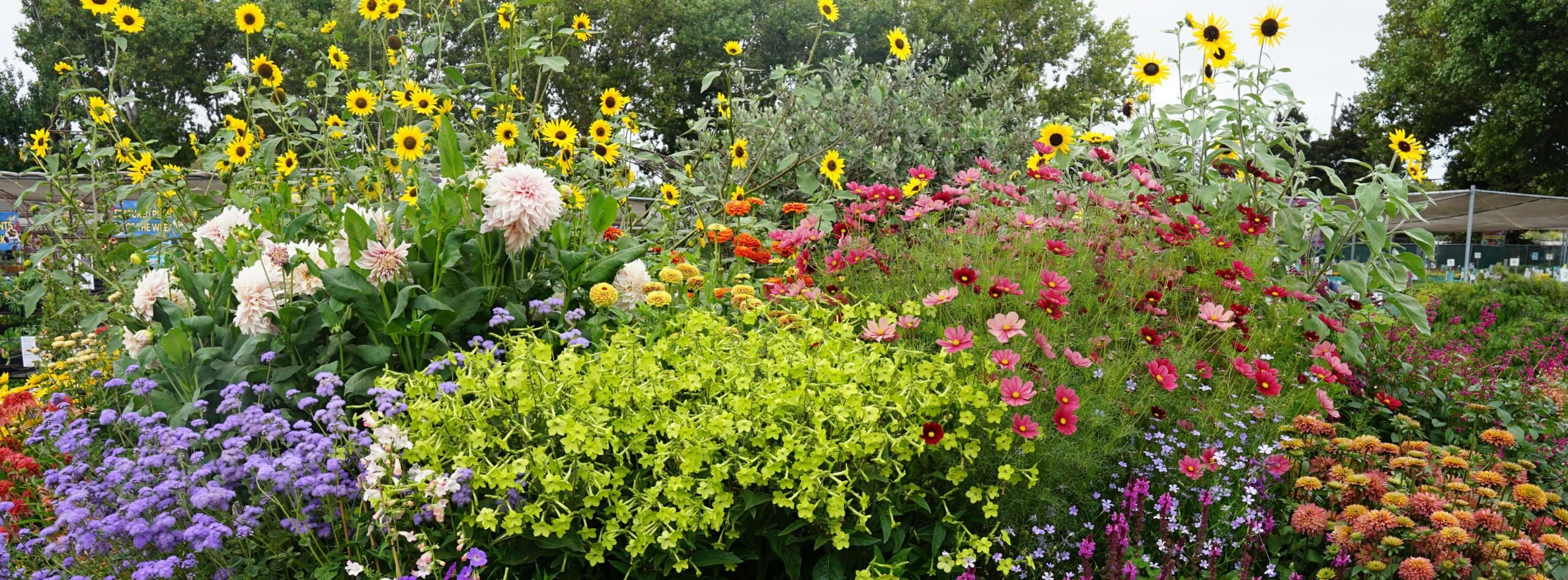
Camera Phone at Giverny: Part 1

Contributor
Pacific Horticulture presents a new monthly photo series by renowned garden photographer and former Pacific Horticulture Board Member, Saxon Holt of PhotoBotanic and Summer-Dry
Winter 2024
I begin this series with a full disclosure. I have been a professional garden photographer for 40 years and do not take any of my professional photos with a camera phone. However, almost all the tips I give in my workshops apply to any camera, recognizing the camera is only a tool to capture an image.
It is up to you to take the picture, and if used with intention and consciousness any camera can take wonderful pictures; especially if you learn a few techniques.
When I hike or travel for vacation, I only take my camera phone, as was the case when I visited Monet’s garden – during tourist hours.

Usually when I travel professionally, I arrange early access for the best light and unobstructed views. Not so on this trip to Giverny and even though we made sure to get there at the first admission, by the time we toured the house there were still plenty of people headed to the lily ponds and looking at the view from the classic wisteria covered bridge.
I took the picture of the people standing on the bridge after I stood there myself, and realized we are part of the story, so I retreated back down the path entering the garden to find this view. The photojournalist in me wanted to document this, to remember what I was seeing, to tell the story of a visit to Giverny.
Photos should always tell a story. That’s the idea of intention: why are you even taking the picture? We want to remember where we were and what we saw; we want to share it with others, tell a story. Composing a picture is all about telling a story, composing various elements consciously within the four edges of the camera that give you a frame.

I was very careful about where I went to tell this story, it’s not just a snapshot from just anywhere on the path. I wanted to make sure the people were silhouetted against a bright area. I wanted to use the elements of vegetation in the garden to help frame that story. I held my camera phone in front of my face carefully juggling these various elements in the frame and waiting for just the right number of people to be on the bridge before I snap the shutter, errr, I mean click the button.
Then I went back on the bridge to take a picture of the lily pond.

I stood in this exact spot for several minutes actually, against the back railing of the bridge looking out, very carefully framing this view with the beautiful curve of the green railing and some wisteria foliage coming down to help block the sky. Those readers who remember my last lesson in the Tuileries garden, will be reminded of the spacing of a similar foliage element against the sky.
As I was standing there on Monet’s bridge, contemplating the scene and wondering which elements were most important or even if it was worth a photograph at all, people were walking by, some quickly snapping their own camera phone photos, which will no doubt be slightly blurry, off kilter and somehow: “I didn’t quite capture that scene”. When I knew I was ready to take the picture, a little gesture stopped folks from passing in front of me just long enough to click the button
Give yourself time to tell the story, think about all the elements you do want to remember, and spend some time looking through the camera, composing. With that intention, not only will your photos be better, you will better see and enjoy the garden.
Having taken that photo I stepped forward, allowing the crowd to pass behind me, and composed this next picture for part 2 of camera phone at Giverny.

Read Part 1: Camera Phones are Cameras here.
Resources
Visit PhotoBotanic for more inspiring photographs by Saxon Holt
Learn More About Summer-Dry and Celebrate Plants in Summer-Dry Climates









Responses